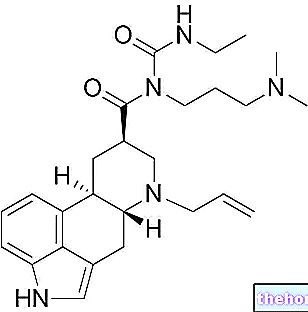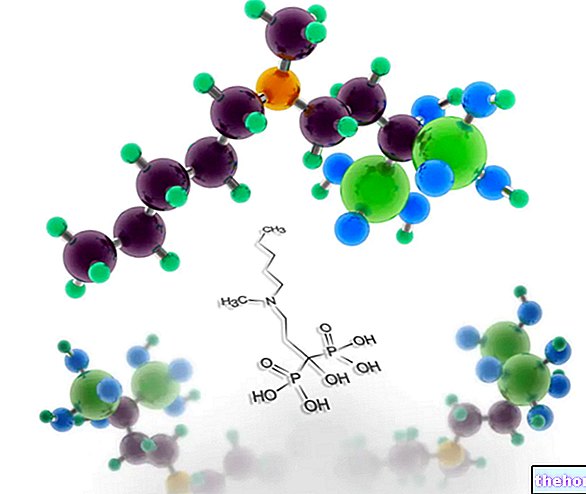A topic closely related to pregnancy and placental development is teratogenesis. Teratogenesis is a process that leads to the formation of large structural malformations in the fetus; if these malformations are very evident we can speak of macroscopic structural malformations, such as for example malformations in the upper and lower limbs, in the various parts of the face, head, palate, etc. ... In terms of teratogenic incidence only 1% of the malformations are due to exposure to drugs, while for 70% the causes of development are not well known. However, it is not certain that any substance that modifies fetal development is a teratogen.
The teratogenic substance must possess very specific characteristics in order to develop a teratogenic effect in the organism. These characteristics are:
- It must induce a characteristic set of malformations with selectivity for certain target organs. For example, a known substance affects the formation of the palate, with the consequence of preventing the latter from closing at the time of birth. The substance under examination can be considered teratogenic because it leads to the development of a malformation that always develops on the same organ ;
- It must exert its effects in a particular stage of fetal development (period of organogenesis);
- It must show a dose-dependent incidence (the more the contact with the teratogenic substance is prolonged, the easier it is for the substance to generate the malformation).
STAGES OF PREGNANCY
DAY 0-15 - Blastocyst formation or nesting stage.
The blastocyst is a first embryo that forms from the 6th day of pregnancy and is formed by an agglomeration of cells. One part of the cells will give rise to the placenta and the other part will give rise to the embryo. The blastocyst will nest in the uterus and start the pregnancy. At this moment the main process is cell division. If the maternal organism in this very early period comes into contact with certain substances, the embryo can react in two specific ways. first, the embryo ends its evolutionary path resisting the exposure of the substance; in the second, the embryo does not resist exposure, therefore embryonic degeneration occurs with consequent abortion ("all or nothing rule").
DAY 17-60 - Embryonic stage and organogenesis.
This is the most sensitive period to teratogenic substances. The most active cellular processes are cell division and migration. In addition, there are also different processes such as the differentiation of organs and vessels. The consequences of "exposure to teratogenic substances are malformations of the eyes, limbs, heart, CNS, palate and urogenital system. If in this period the mother were to come into contact with teratogenic substances, there is a greater chance that the baby will be born with structural malformations.
60-TERM - Fetal stage.
In this period some organs are always developing. The main stages of the fetal stage are tissue formation (histogenesis) and functional maturation. Teratogenic substances no longer have a teratogenic effect if the organ on which they act has completed its development, but they can modify the functional development (proteins or enzymes) of the affected organ. Thus, the latter will have the same structure, devoid of malformations but with impaired activity. The organs most affected are those that continue their differentiation such as CNS, urogenital system, liver and kidney.
Only in the 1960s did we start talking about teratogenesis. Before these years the toxicity tests on drugs were of the acute type and there were no tests on pregnant animals to investigate the effects of the various drugs. which happened right in the 1960s, known as the "thalidomide disaster." This drug went down in history as the first teratogenic drug discovered. advertised as a safe hypnotic-sedative. Thanks to all this publicity, many people consumed it, but several years later it was discovered that the number of unborn babies with malformations was increasing dramatically. Structural malformations consisted of reduced limb development Due to the reduced development of the limbs, which appeared similar to those of seals, the disease was called phocomelia. and when the various facts were connected, it was deduced that the drug advertised as safe unfortunately presented itself as a teratogen. Even today, thalidomide is classified as a 100% teratogenic drug. In the following years, all drugs were subjected to toxicity tests before being marketed. The tests performed on the drugs consisted in experimenting the drug on pregnant animals and in vitro to be able to better determine the teratogenicity of the drug. However, it is not certain that a drug that is teratogenic for animals is also teratogenic for humans, but the various results obtained from the tests can be used.
Some teratogenic drugs are: thalidomide, warfarin, anticonvulsants, cytotoxic drugs, valproate, phenytoin, mercury, retinoids (derived from vitamin A). Some (possible) non-teratogenic substances are: androgens, estrogens, stilbestrol, aminoglucosides, tetracyclines and ethanol.
Other articles on "Teratogenesis, teratogenic drugs"
- Placental barrier
- Elimination of a drug: biotransformation reactions






.jpg)





















